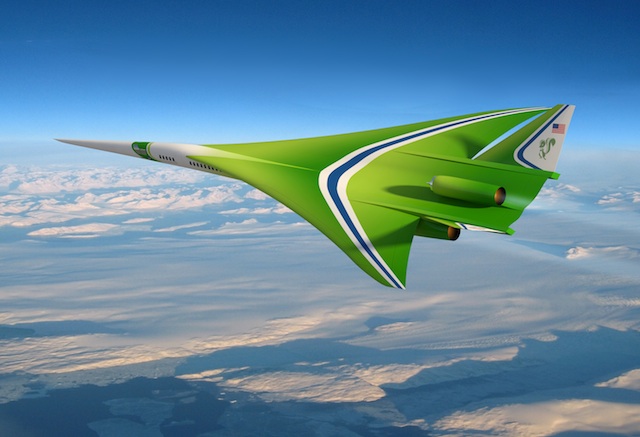A NASA official is preparing an internal proposal to launch a supersonic X-plane demonstrator aimed at proving to regulators that a package of new technologies and design techniques are able to muffle noise from a sonic boom enough to allow overland flights.
The proposal, if funded, would allow NASA to partner with an aircraft manufacturer to build and fly a scaled version of 100-seat supersonic airliner, says Peter Coen, who manages NASA's fundamental aeronautics high-speed research project.
Contracted studies are now underway that would rely on an existing supersonic fighter engine, such as the General Electric F404 or Pratt & Whitney F100, to replicate the noise signatures produced by a full-scale aircraft as it crosses the sound barrier. Such an aircraft could answer a number of vital questions for researchers of "quiet boom" supersonic technology.
"We're looking at, is now the right time and would it be possible to look at building a research aircraft to specifically address the sonic boom standards development?" Coen says.

An artist's concept shows Lockheed Martin's low-boom supersonic airliner. (Courtesy: NASA)
Overland supersonic flight by commercial or business aircraft is heavily restricted. The US government prohibits flight above Mach 0.99 without a waiver from the Federal Aviation Administration. The ICAO standard bans flying at any speed that creates a "sonic disturbance", a definition that may allow some overland flights if the boom produced by the supersonic shockwave cannot be perceived on the ground.
Changing the regulations will be very difficult in the absence of hard data showing that a new generation of supersonic aircraft design and propulsion can significantly reduce the noise of the sonic boom.
"You really need to collect community response data in a realistic environment in order to have any hope of developing a [new noise] standard," Coen says. "That's what's driving us to do a flight demonstration."
The push by Coen's team comes as a large block of aeronautics research funding becomes available in the Fiscal 2015 budget. The five-year-long, environmentally responsible aviation (ERA) project comes to an end in the next fiscal year.
Such an X-plane would build on the largely theoretical work produced over the last five years by two industry teams. Working on contracts funded by the America Reinvestment and Recovery Act in 2008, Boeing and Lockheed Martin separately designed and tested wind tunnel models of potential low-boom supersonic airliners, which yielded a 30-35dB noise improvement compared to the Aerospatial/British Aerospace Concorde, Coen says.

A photo shows a wind tunnel test earlier this year of the Boeing Icon II design at NASA's Glenn Research Center in Cleveland, Ohio. (Courtesy: NASA)
The Boeing and Lockheed studies predict that a 100-150-seat airliner using a similar configuration would provide a 5dB margin above Stage 5 noise requirements, Coen says. Additional development would be required to achieve a 10db margin above Stage 5, the minimum usually needed to introduce a new aircraft.
The Boeing design, identified as Icon II, appeared on NASA's "image of the day" web site in late April, triggering widespread and false reports that the aircraft manufacturer had launched a new supersonic airliner.
Meanwhile, start-up company Aerion and Gulfstream continue to work independently on supersonic business jets which could be ready to enter service within a decade.
NASA would invite all four of those companies to participate if the X-plane project moves forward, Coen says.
Source: Air Transport Intelligence news



















